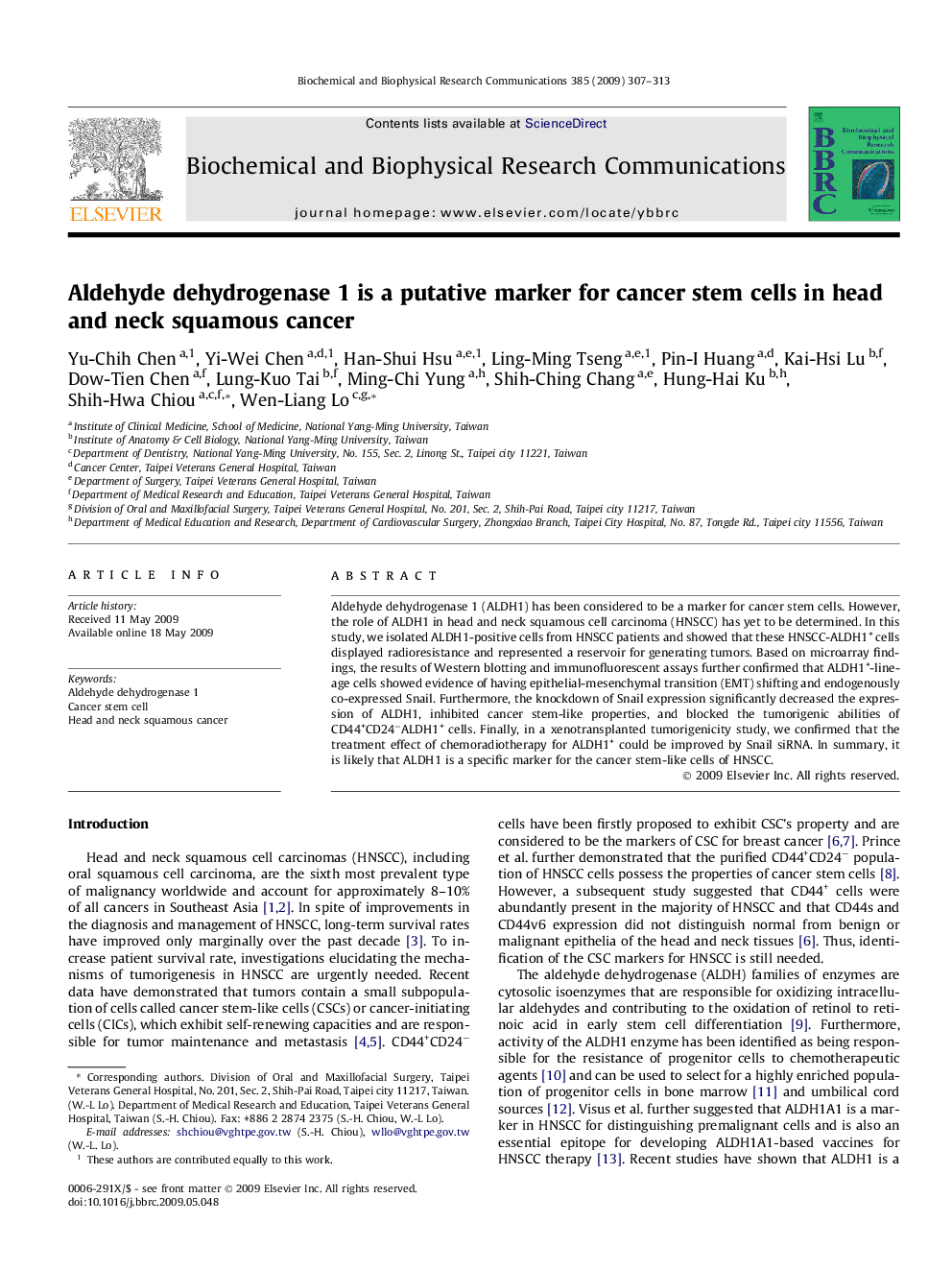| Article ID | Journal | Published Year | Pages | File Type |
|---|---|---|---|---|
| 10765850 | Biochemical and Biophysical Research Communications | 2009 | 7 Pages |
Abstract
Aldehyde dehydrogenase 1 (ALDH1) has been considered to be a marker for cancer stem cells. However, the role of ALDH1 in head and neck squamous cell carcinoma (HNSCC) has yet to be determined. In this study, we isolated ALDH1-positive cells from HNSCC patients and showed that these HNSCC-ALDH1+ cells displayed radioresistance and represented a reservoir for generating tumors. Based on microarray findings, the results of Western blotting and immunofluorescent assays further confirmed that ALDH1+-lineage cells showed evidence of having epithelial-mesenchymal transition (EMT) shifting and endogenously co-expressed Snail. Furthermore, the knockdown of Snail expression significantly decreased the expression of ALDH1, inhibited cancer stem-like properties, and blocked the tumorigenic abilities of CD44+CD24âALDH1+ cells. Finally, in a xenotransplanted tumorigenicity study, we confirmed that the treatment effect of chemoradiotherapy for ALDH1+ could be improved by Snail siRNA. In summary, it is likely that ALDH1 is a specific marker for the cancer stem-like cells of HNSCC.
Related Topics
Life Sciences
Biochemistry, Genetics and Molecular Biology
Biochemistry
Authors
Yu-Chih Chen, Yi-Wei Chen, Han-Shui Hsu, Ling-Ming Tseng, Pin-I Huang, Kai-Hsi Lu, Dow-Tien Chen, Lung-Kuo Tai, Ming-Chi Yung, Shih-Ching Chang, Hung-Hai Ku, Shih-Hwa Chiou, Wen-Liang Lo,
